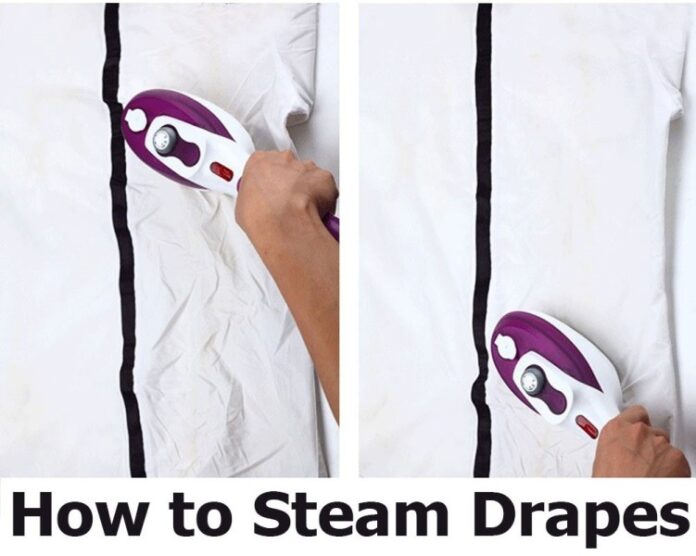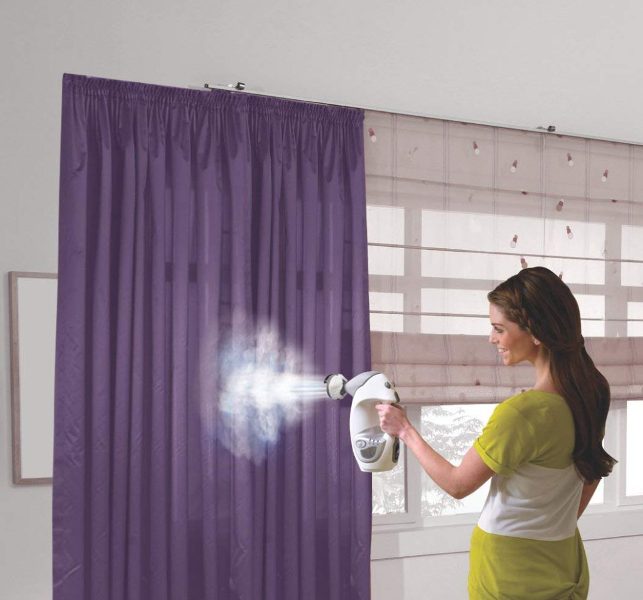Drapes are one of the most popular window accessories. Most of the people think that they are the same as curtains. Though there are some similarities, they are different items. Unlike curtains, drapes are lined and comparatively heavier. Many of these fabrics are thick enough to block out sunlight. That’s why they are best for bedroom uses. Their decorative styles can make any room look excellent. Velvet, damask, silk drapes are perfect for coping with luxurious rooms. You can hang them from rods, hooks, or fabric sleeves.
Drapes are available in a variety of designs and colors. No matter what you choose, you must keep it clean and wrinkle-free. Among several techniques, handwashing is the most common one. Another time-saver alternative is steam cleaning. Let’s talk about why we prioritize the second option over the traditional washing method.
Why steam cleaning is necessary
Laundering the long drapes is undoubtedly a tedious work. First of all, you have to remove it from the window rod or rings. Next is washing the thick fabric carefully. After drying, you should iron to flatten all the wrinkles. The whole process may require the entire afternoon. There is a method that gives us the same result yet within less time. It is called steam cleaning. As the name suggests, it refers to using vaporized water to get rid of dirt. Such machines are mainly for dirt removal from the flooring. But you can also use them to clean drapes. They consist of a container, heating tools, and an application system. We need to pour water into the tank. The water temperature will rise soon due to the heating elements. Later, the steam comes out through any body part of the machine. It can release dirt from drapes in no time. This is easy, eco-friendly, and a great substitute for chemical cleaning. Now and then, we encounter only a few dirty spots when the most fabric is fresh. A steamer can be its solution too.
How to Steam Drapes
It is also essential to know about the proper way of steam cleaning. Our next section describes how to steam drapes in six easy steps.
Step 1: Checking the Label
Well, several drape sheets do not support all cleaning techniques. A few fabrics are only compatible with specific schemes where some may be made for all types. Multiple materials cannot withstand steaming. They are more prone to damage in the presence of heat. Therefore, the manufacturers labeled all drapes according to their appropriate cleaning requirements. You have to check it to know which one is safe for your drapes. If it prohibits steam-cleaning, don’t try to remove dirt by a steam-cleaner.
Step 2: Choosing the Right Machine
None of us want to spend money on a trash product. The same goes for steamers. Focus on the size, weight, portability, and functionalities. It should heat up quickly, has desired water capacity, and uniform steam. Above all, it should be easy to use. Steam-cleaning long drapes will be impossible without an extendable tube. The modern garment steamers also feature additional accessories and benefits. You will surely get one of the best drapery steamers by considering these parameters.
Step 3: Preparing the Machine
Firstly, read the manufacturer’s instructions carefully. Mix some detergent into the water. Fill the tank with this liquid. Turn on the steamer. Leave it for a few minutes to heat the soapy-water. Set your jet nozzle to hose tightly. As soon as the water starts to boil and produces steam, it is ready to use. Adjust the pressure of steam as per need. It will vary depending on the fabric thickness and amount of wrinkles. It is a brilliant idea to set the lightest option on the machine and then increase gradually. Pick the right steam setting.
Step 4: Doing Spot Tests
Whatever you do for cleaning your drapes, make sure to perform a spot test on a small area. Sometimes, steaming with detergent can break the threads, fade out the color, and so on. People owning ultra-thin sheer silk, velvet, and sensitive drapes often face these problems. They should take a gentler approach. If you apply steam on the whole drape, you may end up ruining the whole fabric. Hence, select an unnoticeable portion. Hang the drape up. Arrange the layers in such a way that you can reach them all with minimum effort. Use the steamer by holding it some inches away from the place. Wait until it dries. Then check whether the detergent is suitable for the fabric or not.
Step 5: Start Steaming
Place the steamer’s nozzle about 6 inches away from the garment. Keep your hands out of the steam range because it can burn your body. Start from one top corner and slowly shift to the end. A couple of parts may have over seam lines. They require more steam compared to other seamlines. In this case, don’t forget to spray for more time by holding the nozzle closer. Coat all the front areas of your drape, repeating the procedure. Alternatively, hold the nozzle steadily and let a person move the drape from top to bottom. When you are done, remove the nozzle. Do the same with the other side. You will get the best result by pulling the ends while steaming. You can take help from a family member for it. All she/he has to do is pull the hem to ensure a smooth surface. It will make your job easier.
Step 6: The finishing
It is quite common to miss some hems. So, decide if you are satisfied with the result. Seek for left-out wrinkled or dirty spots. If you found any, Run the tool one more time when they are slightly wet. Leave the curtain to dry naturally. As the majority of drapes are made of thicker layers, it may take a long time. For this reason, we suggest doing it a couple of hours before the evening.
These simple steps will give you clean, shiny, and smooth drapes.



















